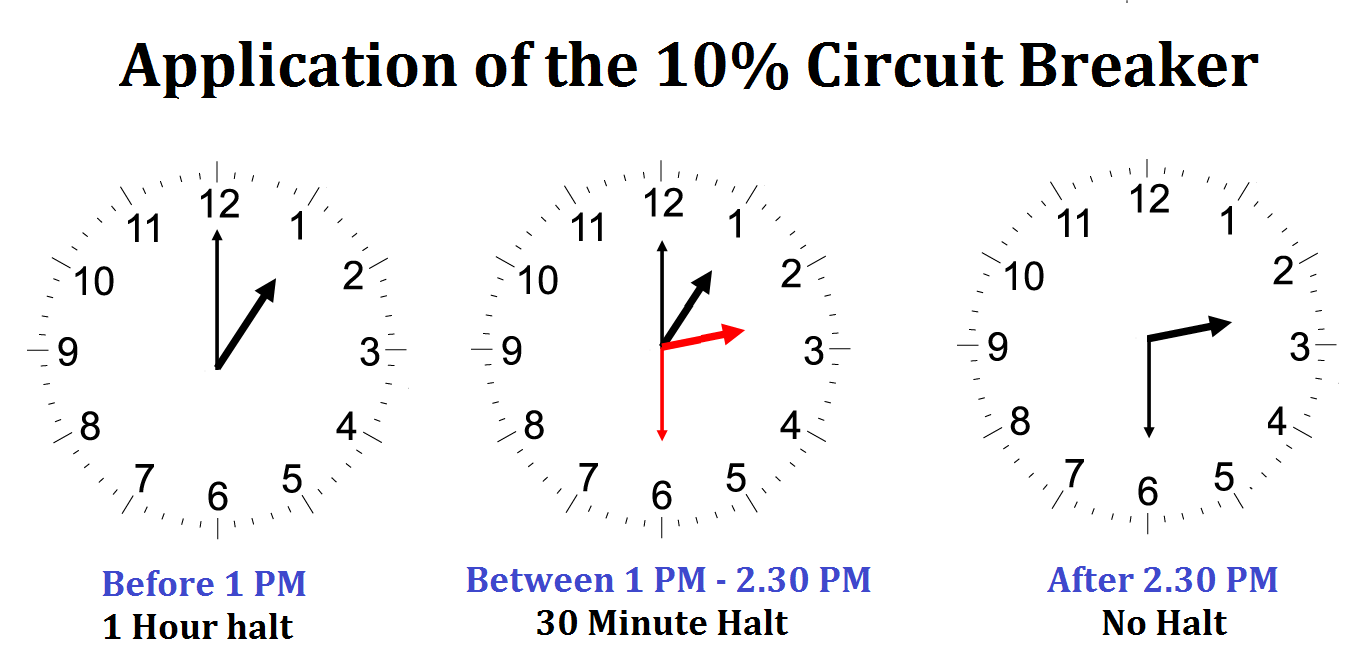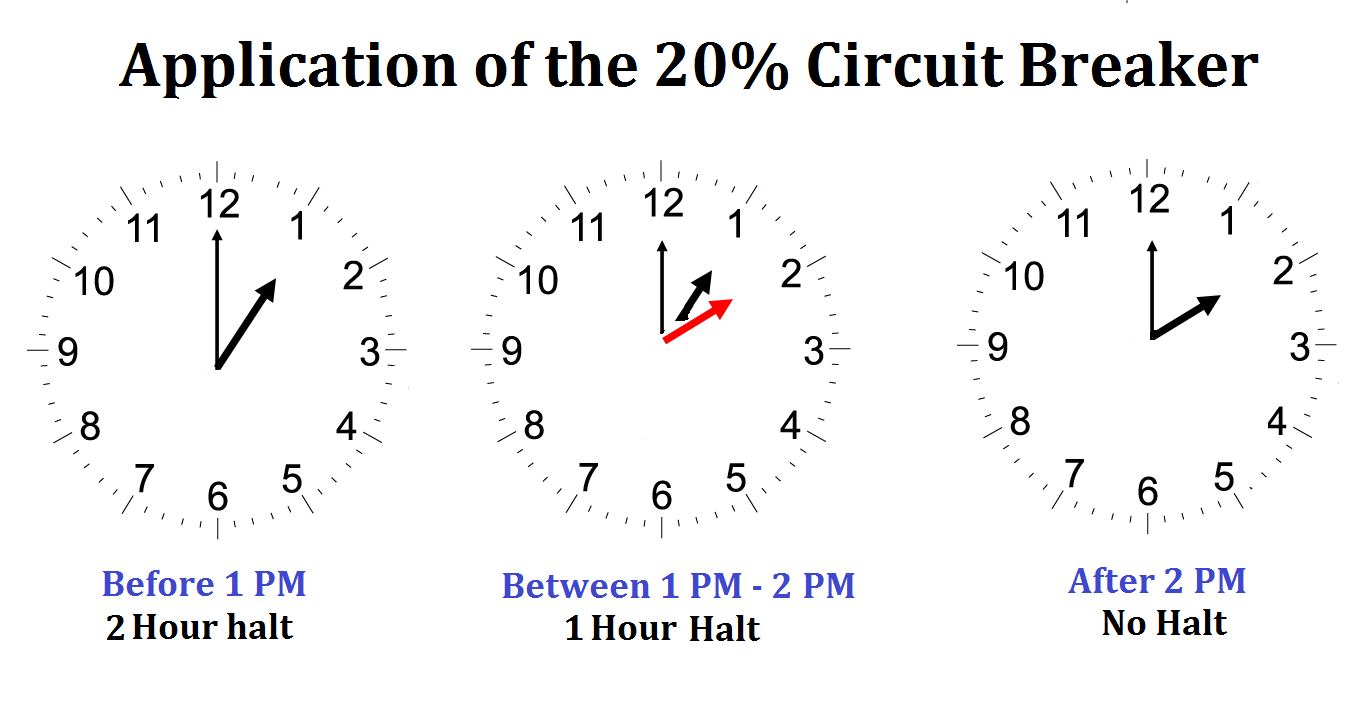In the simplest language possible – a circuit breaker or circuit filter signifies the maximum that a stock (or the market as a whole) could rise or fall before trading in that specific stock (or in the market as a whole) is halted for a certain duration of time.
Once a circuit breaker is applied, no orders can be placed until the trading resumes. However, existing orders with your broker can be modified/ cancelled.
2 points are worth keeping in mind:
[I] Why the need for circuit breakers?
Oftentimes, stock prices fall (or rise) based on news flows; imagine a bad news which leads a panic sell off which results in a domino effect. As more and more investors start dumping their stock, valuations and price often lose their inherent correlation.
To avoid an unwarranted selloff and in order to give investors a chance to reconsider their decision, trading in the stock is halted for a certain period of time. Similarly, when there is an unwarranted buying, the filter is applied so that investors are not swayed by artificial exuberance, if such were to be the case.
[II] At what level are circuit breakers applied?
Two separate things are at play with regard to the level at which circuit breakers are applied.
- Circuit Limits:
On exchange wide basis (Sensex and Nifty), there are three levels at which the circuit breaker kicks in – 10% | 15% | 20%. Once the S&P BSE Sensex or the Nifty 50 moves that much in either direction, trading is halted in all equity and equity derivative markets across the country.
On stock basis, circuit filters are applied at 2% | 5% | 10% | 20% levels. The exchange has pre-defined list of scripts for each of these levels. Circuit breakers are not applied to scripts on which derivative (F&O) products are available and which are part of indices on which derivative products are available.
- Timing
If the 10% movement happens before 1 PM (in either direction), there is a 1 hour halt in trading. If such movement takes place before after 1 PM but before 2.30 PM, there is a halt of 30 minutes. If the movement happens after 2.30 pm, there is no halt.

Once the market reopens for trading – if it hits 20%, trading stops for the rest of the day.



Can you please elaborate on why stocks which have derivatives listed do not have circuit limits?
Mostly because they are highly liquid stocks.
@Rajat Sharma – just because scripts have derivatives like futures and options doesn’t mean they should not have circuit limits. and since you mentioned that these stocks are highly liquid, doesn’t it provide for the case of the opposition party instead of you? because highly liquid stocks are more readily converted into cash than not so highly liquid stocks. and since this occurs, stocks with derivatives should be the one with the circuit limits more than the stocks with no derivatives.
wish you provide a better explanation
“just because scripts have derivatives like futures and options doesn’t mean they should not have circuit limit”. – I agree. We can petition the exchanges together to change this, if you so wish. In many developed markets, the circuit filters do not exist at all. I am totally for that.
“Case of the opposition party” – I don’t understand what you mean. Is this a political comment?
Yes highly liquid stocks means those which have high volume in terms of trading and so it is easy to find buyers/ sellers for such stocks.
“stocks with derivatives should be the one with the circuit limits more than the stocks with no derivatives” – I disagree completely. One idea behind having these filters (in India) is to ensure that an infrequently traded stock can not be manipulated with a small amount of money. The thinking behind this is that stocks with high investor interest are difficult to manipulate. If such stocks move beyond 5-10-15% there is presumption of genuine buying/ selling activity.
Again, this seems odd in so far as the exchanges employ index wide filters.
Hope this clarifies it.
Would you pls let know When did this feature got introduced in Indian markets and how many times so far this worked esp in whole Nifty mainly(or sensex) Index level?
thanks in adv
I’ve never done a count on this. You should neither 🙂